What Does Pandan Taste Like? Discover This Tropical Gem
Pandan, a vibrant green leaf beloved across Southeast Asian cuisines, carries a mystique that intrigues food enthusiasts worldwide.
This aromatic ingredient transforms ordinary dishes into extraordinary culinary experiences with its unique characteristics.
Curious travelers and adventurous eaters often wonder about its distinctive flavor profile and culinary applications.
Chefs and home cooks appreciate pandan for its remarkable ability to elevate both sweet and savory recipes.
The leaf's subtle yet complex essence has captured the imagination of countless food lovers seeking something beyond traditional ingredients.
Its versatility stretches across multiple cultural cooking traditions, making it a fascinating botanical marvel.
Your taste buds are in for an exciting journey as we unravel the sensory secrets of this remarkable ingredient.
Love at First Smell: Pandan
Pandan brings a unique taste to sweet treats when used as an extract, powder, or paste. Cultivated plants show long, slender green leaves with a spiky appearance similar to palm leaves.
Pandan leaves add flavor to desserts in Thailand and neighboring Southeast Asian regions, working much like celery does in other dishes. People enjoy this special ingredient for its distinctive flavor profile.
Pandan 101 for Beginners
Pandan leaves bring special flavors to South-East Asian cooking. Chefs use these green leaves to make desserts, drinks, and savory meals taste amazing. Cooks can use fresh, frozen, or dried pandan leaves to wrap chicken or sticky brown rice.
Green leaves add wonderful smells and colors to different dishes. Food makers use pandan extract and powder to change ingredient colors. People enjoy this ingredient because it costs much less than vanilla beans.
Where Pandan Grows
Pandan grows across many regions in Asia, spreading through African landscapes, Indian territories, Australian zones, Madagascar's environments, Malaysian forest areas, Indochina spaces, and scattered Pacific island locations. Other countries have also successfully cultivated this versatile plant.
Pandan thrives in diverse conditions. Sea edges, rocky terrains, sandy ground, swampy regions, volcanic hillsides, river banks, woodland spaces, and coral reef zones all support healthy pandan growth.
These plants adapt well and continue to flourish in multiple challenging environments.
Pandan Flavor Description
Pandan brings tropical magic to food flavors. Green leaves carry a sweet smell and gentle scent.
Pandan tastes bold with subtle hints of rose, almond, and vanilla near coconut notes. People describe its flavor as grassy.
Basmati rice gains wonderful depth when cooks mix a little pandan into white rice.
Pandan creates amazing kitchen smells that spark hunger instantly.
Chefs should watch carefully when using commercial pandan extract. Small amounts work well, but too much makes food taste bitter and overpowering.
How Pandan Is Used
Pandan comes in different shapes like paste, extract, powder, or leaves. People often use pandan leaves similar to banana leaves for wrapping food.
Since pandan leaves are smaller than banana leaves, some juice might leak out during cooking.
Pandan powder works well in drinks.
Interesting fact: this powder can help make tea last longer, such as turmeric or ginger tea. Pandan paste and extract taste similar to vanilla, so you can use them to add flavor to many dishes.
Pandan: Perks and Warnings
Pandan leaves offer several health perks with limited nutritional impact. People enjoy these leaves mostly for taste and smell.
Leaves lack significant mineral or vitamin content. Curious minds can learn more about pandan's unique qualities and potential drawbacks.
Sugarcane Juice Health Benefits
Sugarcane juice packs more nutrients compared to processed sugar or molasses. Natural juice holds loads of important vitamins, helpful minerals, and strong antioxidants.
These elements make sugarcane juice a powerful drink for boosting health.
May Relieve Arthritis Pain
Arthritis hurts many people worldwide with painful joints and stiffness. Healers in traditional medicine mix pandan leaves and coconut oil to help ease joint discomfort when applied to skin.
Keeps Blood Sugar Steady
People who eat curry daily show lower blood sugar compared to those avoiding this spice mix. Medical studies point to interesting health benefits from regular curry consumption.
Scientists discovered curry helps improve blood movement through the body. Antioxidants inside curry work to support better circulation.
This makes curry helpful for people worried about blood vessel health.
Can Improve Oral Health
Pandan leaves carry a nice smell that can help clean breath. People in some parts of the world use these leaves to help stop gum bleeding.
Medical research hasn't fully checked pandan's effects, but many stories suggest good health results. Common uses include managing blood sugar levels and easing body pain.
Possible Risks Of Pandan
Pandan lacks comprehensive scientific studies, leaving many unknowns about potential side effects and how it might interact with medicines. Small amounts could cause loose stools if someone consumes large quantities, though medical experts need more data about precise dosage risks.
Sugar levels run high in pandan fruit paste. Pandan cakes, fudge candies, and processed foods offer minimal nutritional benefits.
Mixing a bit of pandan into pizzelle batter creates an interesting brunch experiment.
Make Your Own Pandan Extract
Here's how you can make pandan extract and juice with ease. Asian grocery stores sometimes stock fresh pandan leaves, but frozen options are more common.
Frozen leaves work just as well for your cooking needs.
Pandan Juice
Pandan juice comes from blending leaves with water. Green goodness waits right around the corner!
Blenders work best when pandan leaves are crushed first. Leaves tend to be tough and stringy.
Water amounts control juice thickness. Start with 100ml to 240ml water for perfect consistency.
Pandan Extract
Pandan extract comes from the green stuff settling at the bottom of a pandan juice jar. Green color happens because of chlorophyll, which makes pandan look green.
When you store pandan juice in the fridge, let it rest without moving for 18-20 hours. Green bits will collect at the jar's bottom.
You can take off the clear liquid on top and use the extract from the lower part.
Storing and Using Pandan Made Easy
Pandan juice brings sweet magic to many treats. You can use this for rice or desserts like agar jelly cake, cendol, pandan cinnamon rolls, pandan Liu sha bao, pandan mille crepe cake. Kitchen adventures start with fresh recipes.
Pandan extract contains minimal water, so it works well in low-liquid recipes such as macaroons, cookies, donuts. Bakers can experiment more with this special ingredient. Empty cookie jars wait for pandan magic.
Pandan extract and juice stay fresh in refrigerators for seven days. Spoiling starts quickly after that time passes.
Refrigerator styles like side-by-side and French-door models work great for storing pandan extract and juice. Storage limits reach one month before flavor fades. Careful cooks keep ingredients fresh for best results.
Cooking With Pandan Made Fun
Pandan gardens welcome all gardeners, even those without special skills. Plant leaves smell gentle while growing.
Magical scents emerge when people crush and extract pandan, creating powerful moments that capture everyone's attention. People can explore multiple ways to use these special green leaves in cooking and other creative methods!
Sweet Treats With Pandan
Pandan makes a delightful sweet treat with its lovely green shade. Chefs carefully crush fresh pandan leaves into a smooth mixture.
Liquid slowly helps separate the plant's stringy parts during preparation.
Pandan Ice Cream Dessert
Pandan pairs nicely with milk or milk products. People can blend these creamy ingredients and warm them gently.
Next, soak some pandan leaves in the mixture for one or two hours. Remove the used leaves after steeping.
Cooks can now use this milk base for making treats like:
Green Pudding With Sago And Pandan
Soft sago pearls need careful attention during cooking. Pour water and sago into a pot, stirring slowly for about 25 minutes until pearls look clear.
Drain liquid through a sieve for 20 minutes to remove extra water.
Mix pandan liquid and sugar in another pan.
Heat and stir until sugar completely dissolves. Add coconut milk and sago pearls to the sweet mixture.
Cool down the dessert and serve with melon pieces. Drizzle Manuka honey on top for extra sweetness and good health benefits.
Pandan Honeycomb-Style Cake
Vietnamese children have enjoyed this honeycomb cake since French colonial times. Cutting into the cake reveals a delicate green pattern with a wonderfully springy texture.
Pandan extract made at home and rich coconut milk create an authentic pure flavor for this special cake.
Bread With Pandan And Coconut Milk
Southeast Asian cooking often uses coconut and pandan together. These ingredients share a subtle scent with gentle nutty notes that make people want more.
Perfect steps will help you mix pandan juice, coconut milk, and eggs correctly.
Pandan-Infused Water
Pandan water surprises many people, especially those from western countries. This drink brings unexpected peace.
Collect fresh pandan leaves and place them in boiling water. Let them simmer for several minutes.
Strain the liquid through a cheesecloth to remove leaf pieces.
Cool pandan juice becomes a beloved drink in Thailand and neighboring Asian regions.
Drink this refreshing liquid within three days for best taste and quality.
Vietnamese Iced Tea With Pandan
Mix five cut artichokes, 24 crushed pandan leaves, and 4 water liters in one large pot. Heat slowly until bubbling, cover the pot, and cook for about 90 minutes until artichokes feel soft and tender.
Add sugar to make sweet. Let cool down, then strain liquid and chill in refrigerator.
Serve over ice cubes.
Cooking Rice By Boiling
Pandan leaf brings magic to rice cooking, a method passed down through generations in Thailand. Locals continue this traditional practice by knotting a fresh pandan leaf and dropping it into their rice cooker.
Rice gains a special soft scent from this simple trick. People enjoy pandan-infused rice during midday and evening meals as a tasty treat.
Steamed Rice With Pandan
Garlic cloves and ginger slices dance in vegetable oil over medium heat. Rice grains join the sizzling mix, releasing warm scents after two minutes.
Chicken stock and knotted pandan leaves pour into the pot.
Lid covers the rice, letting it cook slowly.
Liquid disappears into soft grains during 12 minutes of gentle simmering. Kitchen fills with rich, comforting smells.
Pot rests off heat, rice settling for 10 more minutes until each kernel stands perfectly separate and firm.
Food Wrapped In Pandan Leaves
Pandan leaves serve as helpful wrapping material in cooking. People often use them for specific dishes such as Gai Kor Bai Toey, which features chicken wrapped inside these leaves.
Thai cooks value pandan leaves for their special qualities during meal preparation. Leaves help meat stay wet while cooking and create nice smells.
When finished, meats turn out tasty and full of juice.
Pandan leaves work differently from big banana leaves.
Their smaller size does not stop them from being good for wrapping foods. Each leaf brings its own nice scent and flavor to whatever it covers.
Cooks know these leaves make simple dishes feel more special. Wrapping meat inside pandan leaves helps lock in moisture and flavor, making meals more enjoyable for everyone.
Scent Of Pandan
Pandan has deep roots in Thai cooking since ancient Ayutthaya times. Thai taxi drivers often place fresh pandan leaves on their car seats.
People use these fragrant leaves to create a nice smell inside their vehicles.
Pandan brings special flavor and green color to many Asian dishes.
It works perfectly with lemongrass, coconut water, palm sugar, and turmeric.
Jam Made With Pandan And Coconut
Eggs need four large ones mixed with pandan extract and coconut milk. Add flour and palm sugar in a bowl.
Blend everything until smooth and well combined.
Start cooking the mixture slowly over medium-low heat.
Stir without stopping during 5-6 minutes. Watch carefully so eggs do not become scrambled.
Mix gently until reaching correct thickness. After cooking, cool down the mixture.
Strain carefully and keep inside refrigerator.
Mango With Lime And Pandan Syrup
Blend water, lime juice, caster sugar, chopped makrut lime leaves, and chopped pandan leaves in a saucepan.
Simmer mixture until sugar dissolves completely, about 5 minutes.
Remove from heat and let cool. Drizzle syrup over sliced fresh mango when serving.
Curry With Pandan Flavor
Chili and turmeric powder mix with lemon juice and dried spices to coat chicken pieces. Coconut and pandan leaves infuse a nutty aroma into the braising liquid, similar to techniques used in Sri Lankan fish curry recipes.
Spend moments exploring how smooth and rich curry sauces can become. Cooking becomes simple!
Pandan Allergies & Sensitivities
Pandan Flavor and FAQs Unlocked
1. What does pandan taste like?
Pandan has a sweet, grassy, and slightly nutty flavor with a fresh, tropical aroma. It’s often described as a mix between vanilla and coconut.
2. Can pandan extract taste bitter?
Yes, pandan extract is quite concentrated and can taste bitter if you use too much. A little goes a long way to add a delicate tropical flavor to desserts and drinks.
3. What can I use if I don’t have pandan?
Vanilla is the closest substitute for pandan’s sweet notes. For more floral aroma, you can add a splash of jasmine tea along with vanilla.
4. Can pandan be grown at home?
Yes, but only in tropical or warm climates. Pandan grows into a large shrub if leaves aren’t harvested often but stays smaller when trimmed regularly.
5. Are there any fun facts about pandan?
Pandan is also known as screw pine or screwpine leaf in the West. Its fragrant flowers are used in northern Indian biryanis. The plant belongs to the Pandanaceae family.
6. How is pandan used in cooking?
Pandan leaves and extract are popular in Southeast Asian desserts, rice dishes, and drinks, adding a unique flavor and aroma.
7. Is pandan healthy?
Pandan has antioxidants and has been traditionally used to aid digestion and reduce inflammation, but mostly it’s enjoyed for its flavor.
8. How should pandan be stored?
Fresh pandan leaves can be wrapped and refrigerated for about a week or frozen for longer storage. Extracts should be kept in a cool, dark place.
Pandan: More Than Just a Scent
Pandan carries a naturally sweet, herbal, and aromatic flavor similar to vanilla. Learn about its characteristics and quantities to confidently incorporate this tropical aroma into many dishes.
Unsure how to use pandan? Simply mix pandan juice into your favorite vegan cookie or cake and invite friends for a tasting party. Interested in sharing your thoughts about its flavor?
Keep watching and comment below with your recent pandan experience. Spread this review through your social networks. Friends and family will surely appreciate pandan's unique taste, right?

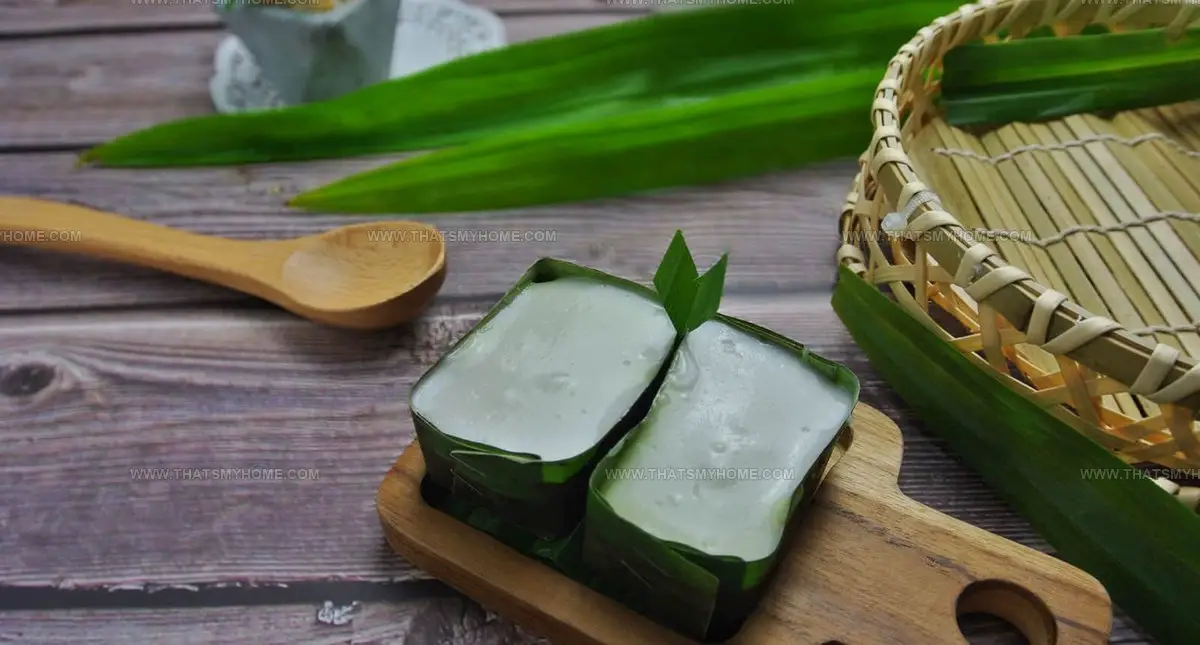
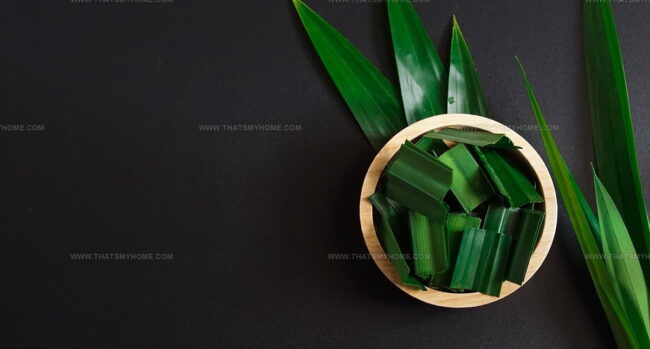
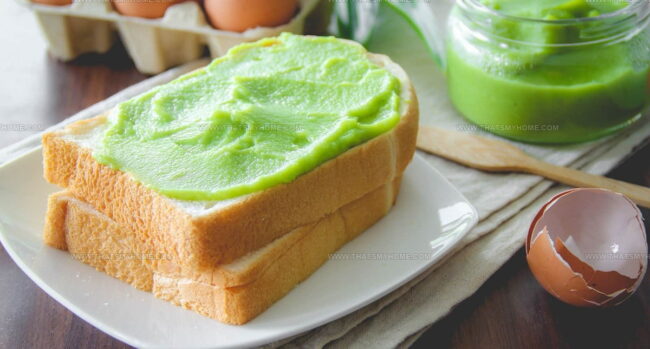
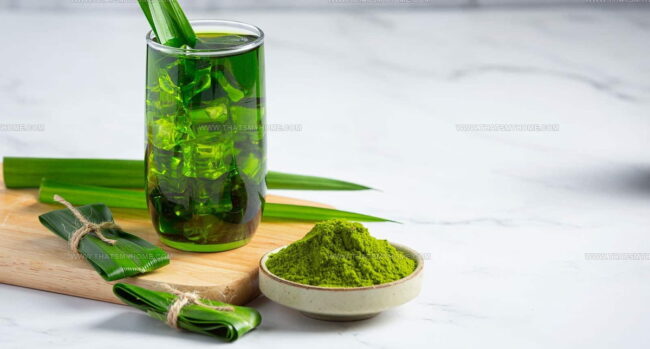
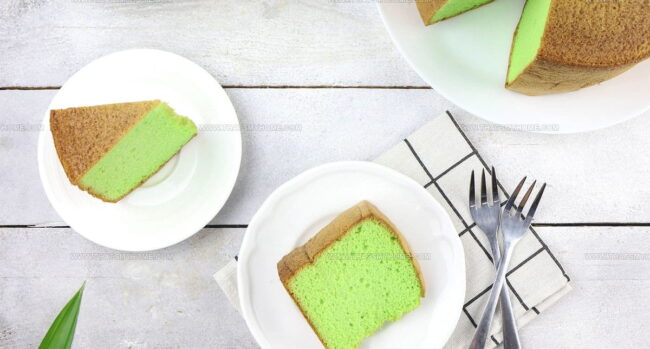
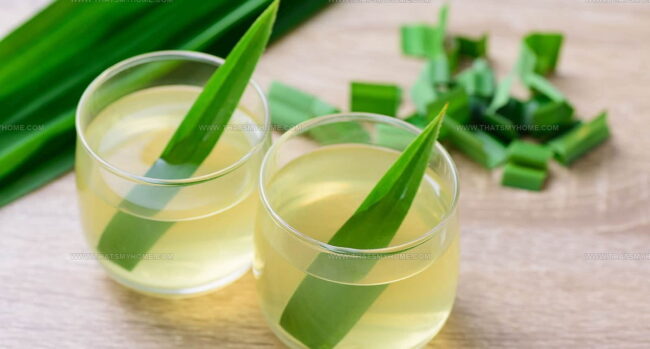
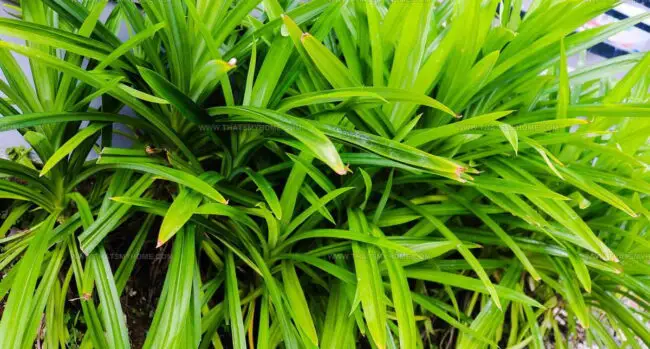
Mary Ellen
Expertise
Education